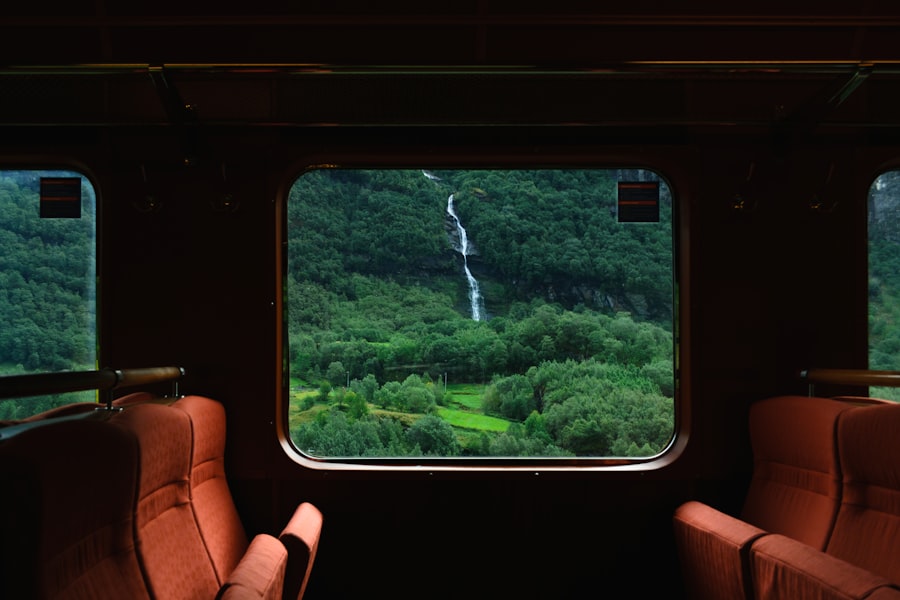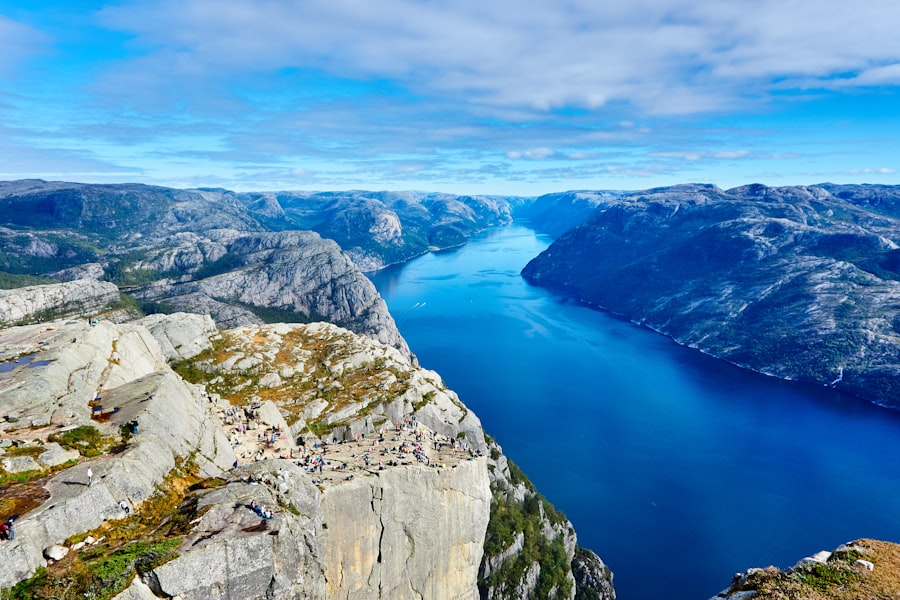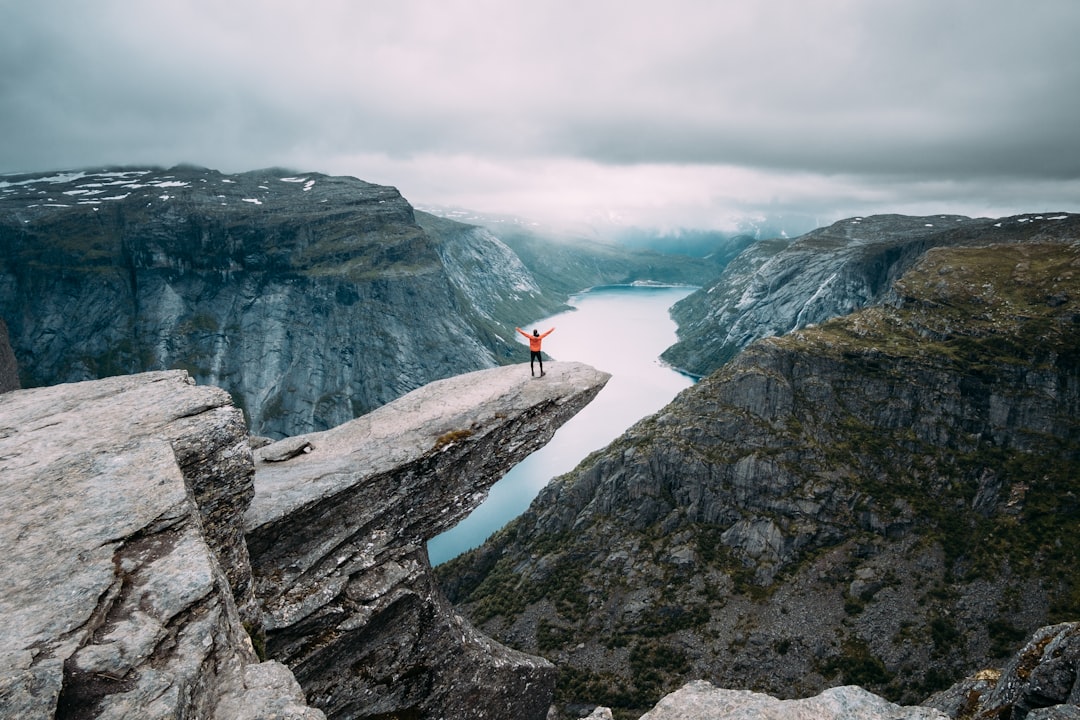Driving in Norway can be a delightful experience, but it is essential to understand the rules of the road before embarking on your journey. The country has a reputation for its strict adherence to traffic laws, which are designed to ensure the safety of all road users. One of the fundamental rules is that all drivers must carry a valid driving licence, vehicle registration documents, and proof of insurance.
Additionally, it is mandatory for all passengers to wear seatbelts, and children under the age of 135 cm must be secured in an appropriate child seat. Speed limits in Norway are clearly defined and vary depending on the type of road and area. In urban areas, the limit is typically 50 km/h, while on rural roads, it can increase to 80 km/h.
On motorways, the speed limit is generally set at 90 km/h or 100 km/h. It is crucial to adhere to these limits, as fines for speeding can be hefty. Moreover, Norway has a zero-tolerance policy towards driving under the influence of alcohol, with a legal blood alcohol limit of just 0.2%.
Understanding these regulations is vital for a safe and enjoyable driving experience in this beautiful country. Book your 1-hour strategy session with Norway Relocation Group.
Summary
- In Norway, it is important to understand the rules of the road, including right of way and speed limits, to ensure safe and legal driving.
- Familiarising yourself with Norwegian road signs and symbols is essential for navigating the country’s roads and understanding important information such as speed limits and directions.
- Norway’s unique driving conditions, including narrow and winding roads, require careful navigation and attention to road safety.
- When renting a car in Norway, be sure to familiarise yourself with the rental company’s policies, insurance coverage, and any additional fees or requirements.
- Understanding the toll roads and payment systems in Norway is crucial for avoiding fines and ensuring a smooth driving experience.
Getting Familiar with Norwegian Road Signs and Symbols
Norwegian road signs are designed to be clear and informative, ensuring that drivers can navigate safely and efficiently. Familiarising oneself with these signs is essential for anyone planning to drive in Norway. The signs are predominantly in Norwegian, but many are universally recognisable symbols that convey important information about road conditions, speed limits, and hazards.
For instance, warning signs indicating sharp bends or steep gradients are crucial for drivers to heed, especially in rural areas where roads can be narrow and winding. In addition to warning signs, there are also regulatory signs that dictate specific actions drivers must take. These include stop signs, yield signs, and no entry signs.
Understanding these symbols will help prevent accidents and ensure compliance with local traffic laws. Furthermore, information signs provide guidance on distances to various destinations and indicate services such as petrol stations and rest areas. By taking the time to learn these signs before hitting the road, drivers can navigate Norway’s picturesque landscapes with confidence.
Navigating Norway’s Unique Driving Conditions

Norway’s diverse geography presents unique driving conditions that can vary significantly from one region to another. From coastal roads hugging the fjords to mountainous terrains with steep inclines, drivers must be prepared for a range of challenges. One notable feature of Norwegian roads is the presence of tunnels and bridges that connect various parts of the country.
These structures often have specific regulations regarding speed limits and vehicle types allowed, so it is essential to pay attention to signage when approaching them. Weather conditions can also dramatically affect driving in Norway. Rain, snow, and fog are common, particularly during the winter months.
Drivers should be aware that visibility can change rapidly, and road surfaces may become slippery due to ice or snow accumulation. It is advisable to check weather forecasts before setting out on a journey and to adjust driving behaviour accordingly. By being mindful of these unique driving conditions, motorists can ensure a safer experience while exploring Norway’s stunning landscapes.
Tips for Renting a Car in Norway
Renting a car in Norway can be an excellent way to explore the country’s breathtaking scenery at your own pace. However, there are several factors to consider when choosing a rental vehicle. First and foremost, it is essential to book your car in advance, especially during peak tourist seasons when demand can be high.
Many rental companies offer online booking options that allow you to compare prices and vehicle types easily. When selecting a car, consider the type of terrain you will be navigating. If you plan to explore remote areas or venture into the mountains, opting for a four-wheel-drive vehicle may be wise.
Additionally, ensure that you are familiar with the rental company’s policies regarding fuel usage and mileage limits. Most companies provide vehicles with a full tank of petrol and expect them to be returned in the same condition. Understanding these details will help avoid any unexpected charges upon returning the vehicle.
Understanding the Toll Roads and Payment Systems
Norway has an extensive network of toll roads that help fund the maintenance and development of its infrastructure. As a driver, it is crucial to understand how these toll systems operate to avoid any surprises during your journey. Many toll roads in Norway use an automatic payment system known as “AutoPASS,” which allows vehicles equipped with a transponder to pass through toll booths without stopping.
This system is convenient for frequent travellers but may require advance registration. For those without an AutoPASS transponder, tolls can be paid at designated payment stations or online after passing through the toll area. It is advisable to keep track of your toll usage during your travels, as charges can accumulate quickly on longer journeys.
Additionally, some rental car companies may offer their own toll payment systems or charge fees for using toll roads, so it is essential to clarify these details when renting your vehicle.
Adapting to Norwegian Driving Etiquette

Driving etiquette in Norway reflects the country’s emphasis on safety and respect for fellow road users. One key aspect of this etiquette is yielding to pedestrians at crosswalks; drivers are expected to stop when pedestrians are waiting to cross. Additionally, cyclists are prevalent in urban areas, and motorists should always be vigilant when sharing the road with them.
Another important consideration is the use of headlights. In Norway, it is mandatory to use dipped headlights at all times while driving, regardless of the time of day or weather conditions. This practice enhances visibility and safety for all road users.
Furthermore, maintaining a safe distance from other vehicles is crucial, particularly on winding roads or during adverse weather conditions. By adhering to these etiquette guidelines, drivers can contribute to a safer driving environment for everyone on Norwegian roads.
Dealing with Winter Driving Challenges
Winter driving in Norway presents its own set of challenges that require careful preparation and awareness. Snow and ice can create hazardous conditions on the roads, making it essential for drivers to equip their vehicles with winter tyres during the colder months. These tyres provide better traction on slippery surfaces and are often required by law in certain regions.
In addition to using appropriate tyres, drivers should also be prepared for reduced visibility due to snowstorms or fog. Keeping headlights on at all times can help improve visibility for both the driver and other road users. It is also advisable to carry emergency supplies in your vehicle during winter months, including blankets, food, water, and a shovel in case you become stranded.
By taking these precautions and adapting driving habits accordingly, motorists can navigate Norway’s winter roads more safely.
Exploring Norway’s Scenic Routes and Fjord Roads
One of the most rewarding aspects of driving in Norway is the opportunity to explore its stunning scenic routes and fjord roads. The country boasts several designated scenic drives that showcase its breathtaking landscapes, including dramatic mountains, serene lakes, and picturesque coastal views. The Atlantic Road is one such route that has gained international acclaim for its unique architecture and stunning vistas.
Another remarkable drive is the Geiranger-Trollstigen route, which takes you through some of Norway’s most iconic fjords and offers breathtaking views from various lookout points along the way. These scenic routes are not only a feast for the eyes but also provide ample opportunities for outdoor activities such as hiking and photography. Taking the time to explore these routes will undoubtedly enhance your experience of Norway’s natural beauty.
Parking in Norway: Rules and Regulations
Parking regulations in Norway are strictly enforced, and understanding these rules is crucial for avoiding fines or penalties during your visit. In urban areas, parking spaces are often limited and may require payment at designated meters or through mobile apps. It is essential to check signage indicating parking restrictions and payment requirements before leaving your vehicle.
In some areas, particularly near popular tourist attractions or city centres, parking may be subject to time limits or designated zones for residents only. Additionally, many cities have implemented environmentally friendly initiatives that restrict parking access for certain vehicles based on emissions levels. Familiarising yourself with local parking regulations will help ensure a hassle-free experience while exploring Norway’s cities.
Using Public Transport as an Alternative to Driving
While renting a car offers flexibility in exploring Norway’s vast landscapes, public transport can be an excellent alternative for those who prefer not to drive. The country boasts an efficient public transport system that includes trains, buses, ferries, and trams connecting major cities and regions. The scenic train journeys through Norway’s fjords are particularly popular among tourists seeking a unique travel experience.
Using public transport not only alleviates the stress of navigating unfamiliar roads but also allows travellers to relax and enjoy the stunning scenery without worrying about parking or tolls. Many cities offer integrated transport passes that provide unlimited travel within specific zones or timeframes, making it easy to explore urban areas without needing a car.
What to Do in Case of an Accident or Emergency
In the unfortunate event of an accident or emergency while driving in Norway, knowing how to respond is crucial for ensuring safety and compliance with local laws. If you find yourself involved in an accident, it is essential first to check for injuries among all parties involved and call emergency services if necessary by dialling 113 for medical assistance or 112 for police support. Once safety has been established, it is important to exchange information with other drivers involved in the accident, including names, contact details, insurance information, and vehicle registration numbers.
Documenting the scene with photographs can also be helpful for insurance claims later on. If your vehicle becomes immobilised due to mechanical failure or an accident, it is advisable to place warning triangles behind your vehicle to alert other drivers. For those who may not speak Norwegian fluently or feel comfortable navigating emergency situations alone, having access to translation apps or contacting local authorities who can assist in English can be beneficial.
In conclusion, whether you choose to drive through Norway’s breathtaking landscapes or opt for public transport alternatives like trains or buses, understanding local rules and regulations will enhance your experience significantly. For those looking to immerse themselves further into Norwegian culture while navigating these beautiful routes, consider enrolling in Norwegian courses at the NLS Norwegian Language School in Oslo. Not only will you gain valuable language skills that will enrich your travels but also foster deeper connections with locals along your journey through this stunning country.
Speak Norwegian with confidence. Enroll in a class at the NLS Norwegian Language School now.

